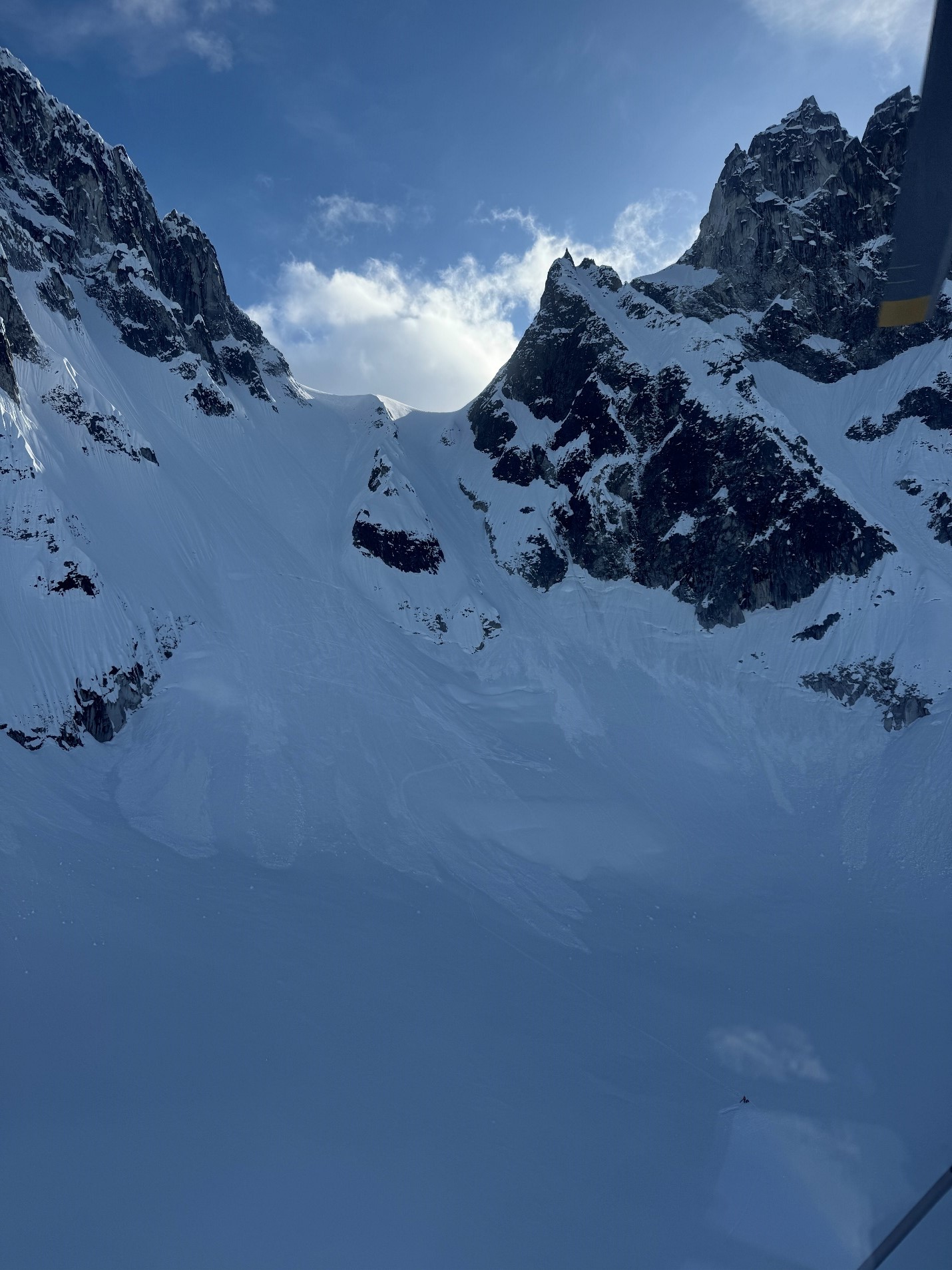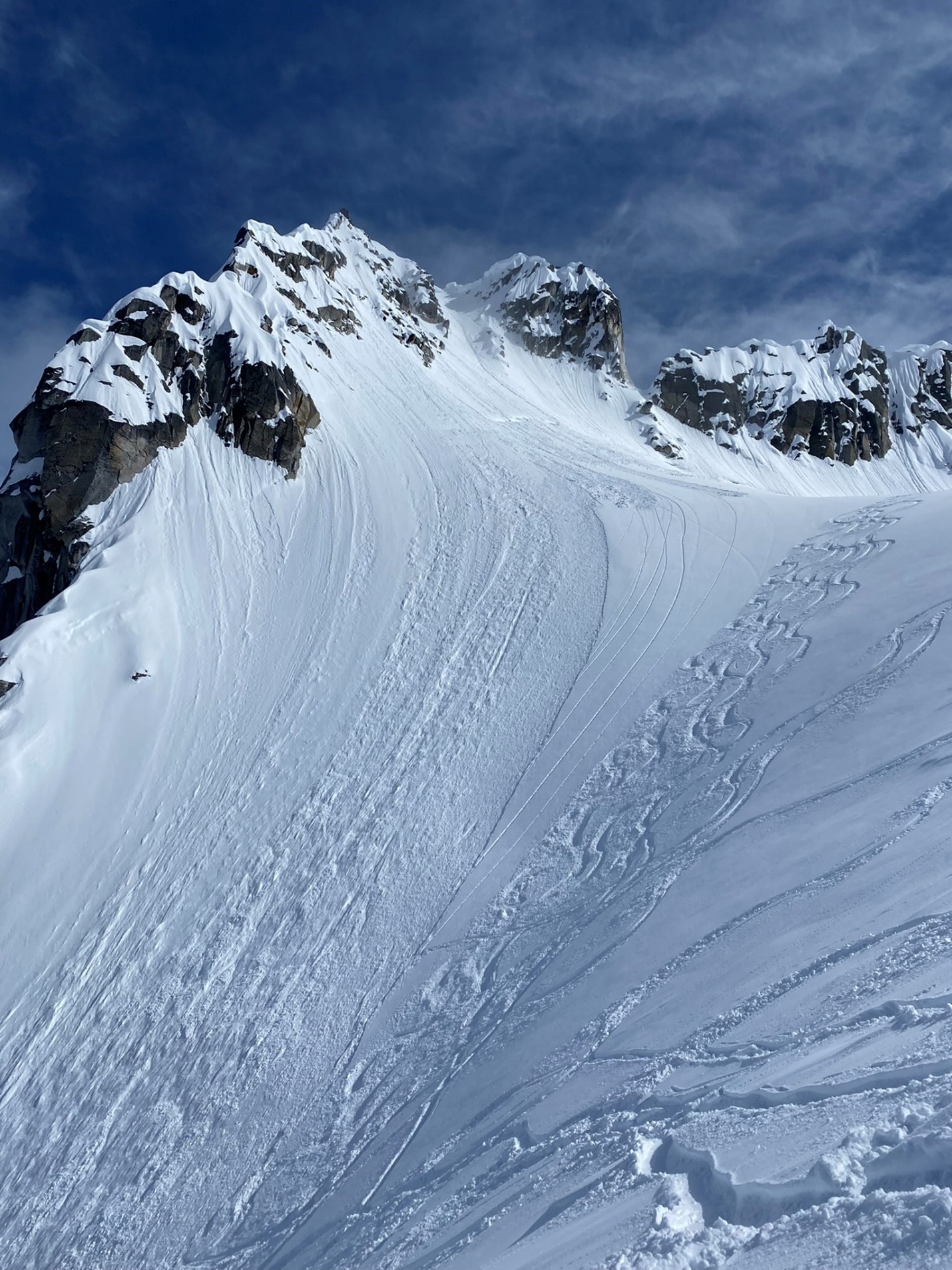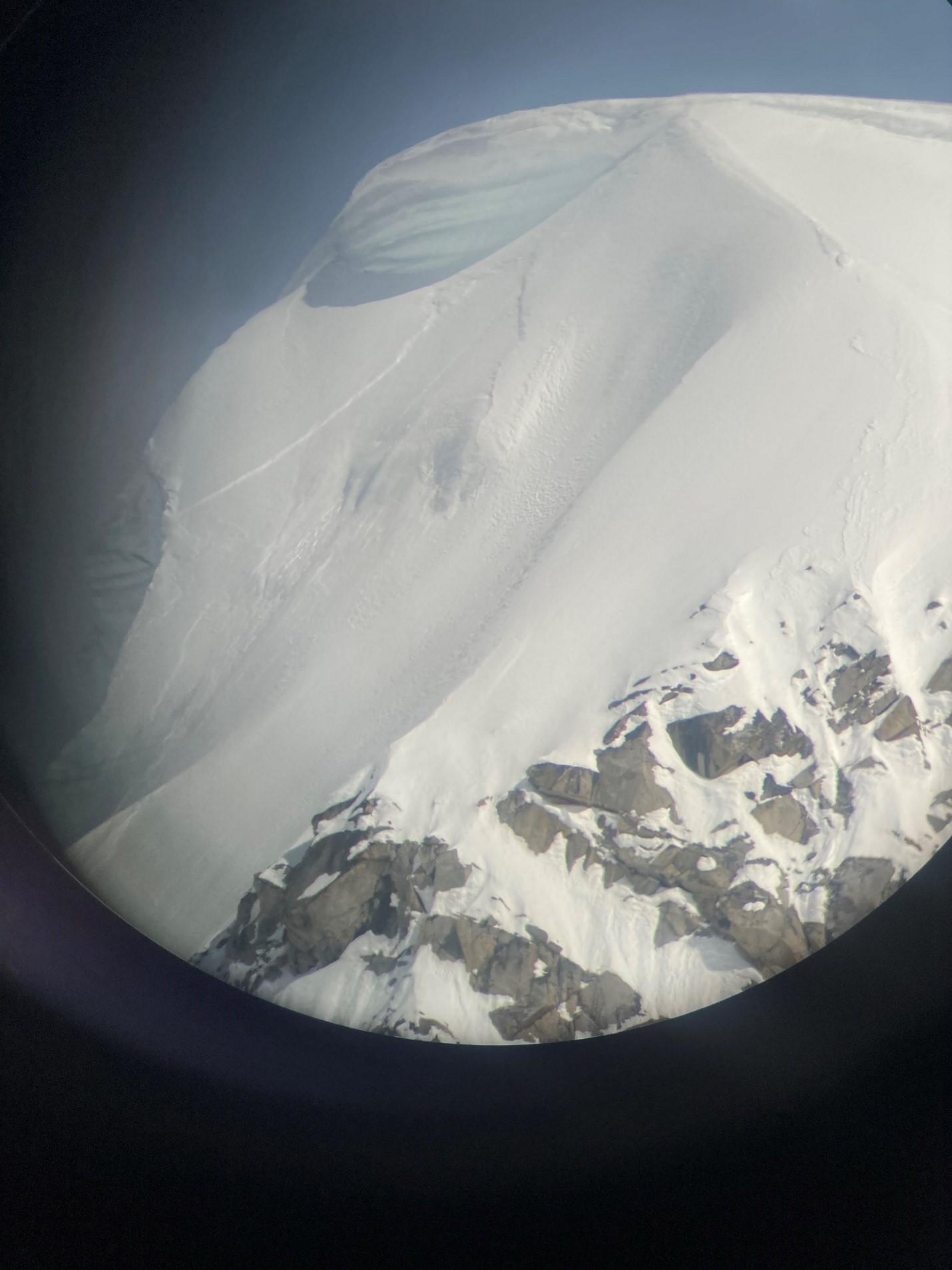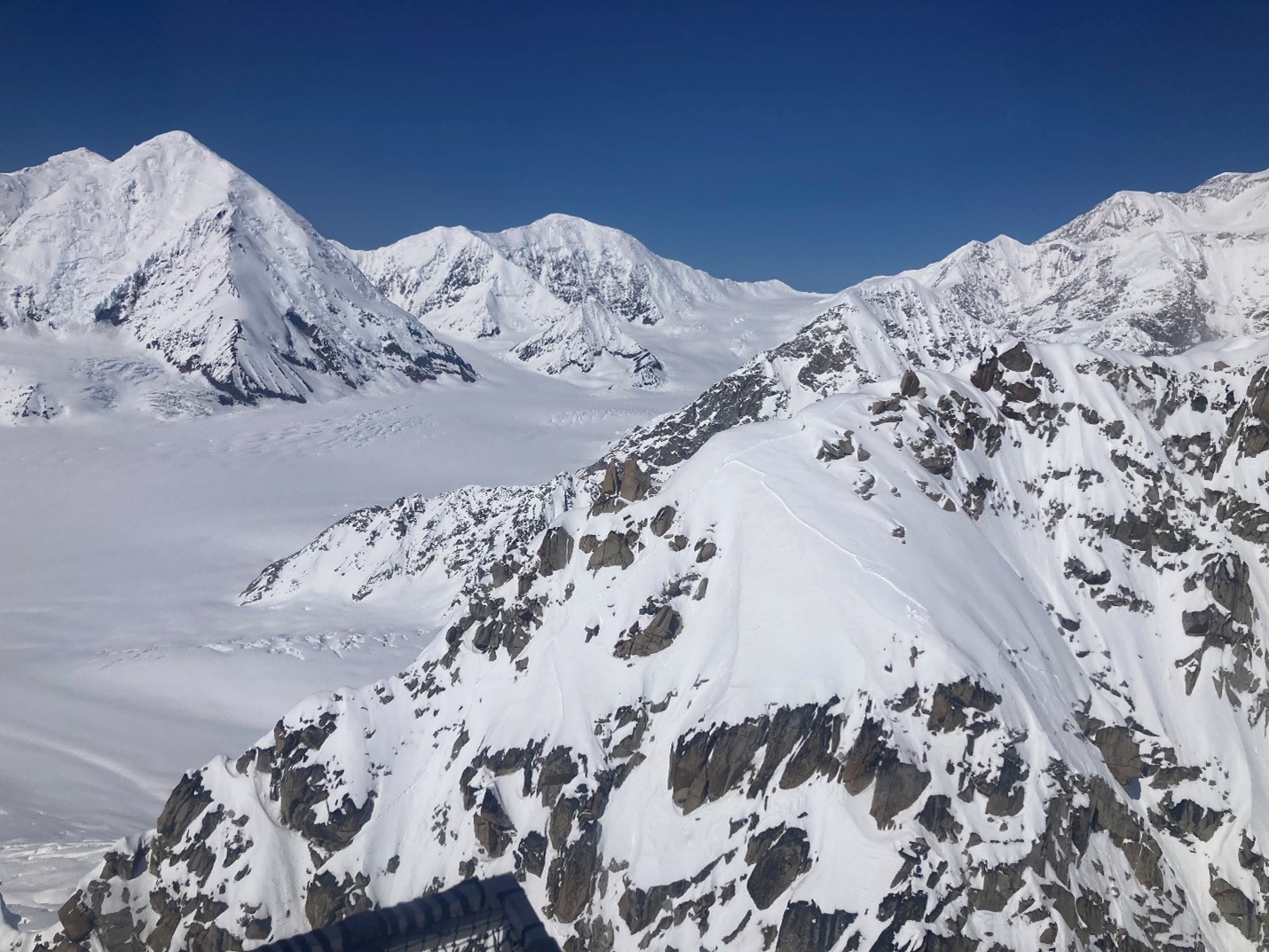On May 13, at approximately 1615, the Talkeetna Ranger Station received a report of an avalanche adjacent to the Pika Glacier down the NE facing couloir named Grizzly Gap. In the party of 5, three skiers were caught and carried, and two of those were injured. The NPS responded in our high-altitude helicopter with two rangers. The three skiers caught in the avalanche were rescued via short haul due to remaining overhead avalanche hazard. The two skiers who escaped the slide were able to self-evacuate back to the Pika Airstrip and their camp. The two injured skiers were evacuated back to Talkeetna for evaluation.

Overview of Grizzly Gap incident, May 13. The injured climbers can be seen in the lower right corner of the photo. They were caught near the top of the triangular rock buttress centered below the saddle, on the lookers’ left side. They were carried past the bottom of this buttress.
This avalanche actually originated on a completely different aspect and face than the skiers had chosen, but then funneled into the terrain they were ascending. They reported their ski run down to have soft, fun, supportable snow that had fallen in the previous week and a half. They were not suspecting avalanche conditions on this protected aspect and were caught by surprise. These were experienced skiers and riders who have spent a significant amount of time in the Range and avalanche terrain.

The start zone for this avalanche originated in a completely different aspect, elevation, and type of terrain that the skiers had chosen and may not have been part of their risk management assessment.
About 600 feet above Grizzly Gap, a NW-W-SW facing bowl with exposed rock most likely heated up in the sun while they were skiing. This caused a loose, dry slide that ran into the couloir while they were booting up. This was not a large avalanche (D1-1.5), but in steep terrain even small avalanches can have catastrophic consequences. This team was lucky to walk away from this incident with minor injuries.
Avalanche Conditions in the Alaska Range
Across the central Alaska Range (Kahiltna, Tokositna, and Ruth Glaciers), conditions are highly variable and dangerous. This was a dry winter in Southcentral Alaska, which results in a rotten, faceted snowpack. However, April was unusually wet and stormy. Down in Talkeetna, precipitation was 151% of normal (2” of water). Climbers in the range reported feet of snow at a time toward the end of April. This made climbing a challenge with reports of wading through waist deep snow to reach routes, and numerous slab and loose avalanches from the wet snow. This combination has left us with a dangerous combination of new snow over weak, faceted old snow over the central Range.Things may be settling down, but we are still seeing quite a bit of avalanche activity and more snow is in the forecast. Be suspicious of many different types of avalanche problems at different elevations and aspects.At lower, solar aspects, expect everything from loose, dry avalanches on more northerly aspects to loose wet and wet slab avalanches on solar aspects. If you’re heading to places like the Pika, Triple Crown, or lower elevations in the Ruth Gorge, be keyed into these problems.

Slab avalanche observed from Kahiltna Base Camp, NW aspect, approximately 8,400’.
Mid elevations have seen a combination of new snow and persistent slab problems. A team reported a deep persistent slab avalanche from serac fall in the Ruth Gorge in late April; these problems can take quite some time to heal in the cold temps seen in the Range and should still be suspect.
In addition, climbing teams and observers from the Base Camp area reported everything from small wind and storm slabs to wet loose slabs to persistent slabs, aspect dependent. Most concerningly, we observed a significant, apparently human-triggered slab on a south aspect at about 9500’. It appears this slab broke at a new snow-old snow interface, propagated across the whole face, and was about 1-1.5’ deep. The consequences of getting caught in this terrain without protection would have been serious.

Slab avalanche off of the Kahiltna Glacier, observed by the NPS from the air. Southerly aspect, approximately 9,500’. Mt. Crosson is seen in the upper left of the photo.
As you head into the Range to recreate, please take the time to carefully assess snow conditions and the amount of risk you want to take on. Even very small avalanches can have quite large consequences in steep, consequential terrain. Take into account the complexity of your terrain, and whether overhanging or adjacent terrain needs to be assessed.
DISPATCH WEATHER DISCLAIMER: The National Weather Service issues a daily recreational climbing report which can be found here (note: the URL has changed from past years and the old one is no longer operational). Many other useful weather products including temperature, wind, and snowfall totals can be found through Mountain Weather.
